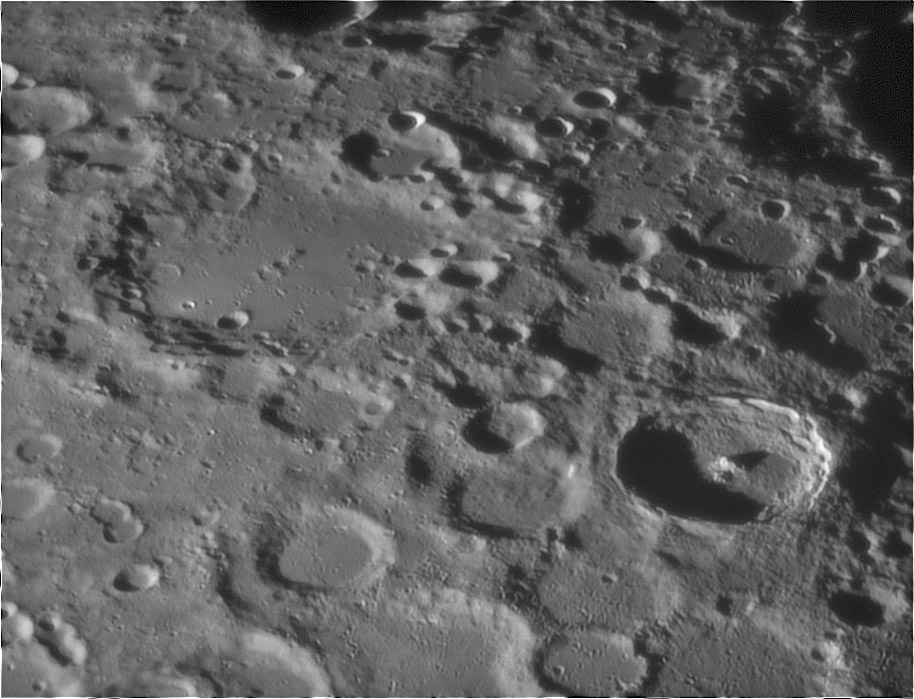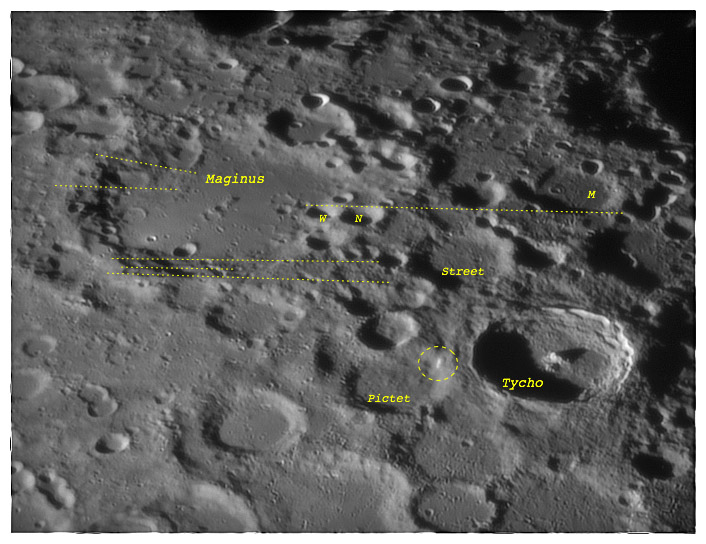Difference between revisions of "July 7, 2009"
| Line 3: | Line 3: | ||
<!-- ws:start:WikiTextHeadingRule:2:<h1> --> | <!-- ws:start:WikiTextHeadingRule:2:<h1> --> | ||
<!-- ws:start:WikiTextLocalImageRule:8:<img src="/file/view/LPOD-July7-09.jpg/80448115/LPOD-July7-09.jpg" alt="" title="" /> -->[[File:LPOD-July7-09.jpg|LPOD-July7-09.jpg]]<!-- ws:end:WikiTextLocalImageRule:8 --><br /> | <!-- ws:start:WikiTextLocalImageRule:8:<img src="/file/view/LPOD-July7-09.jpg/80448115/LPOD-July7-09.jpg" alt="" title="" /> -->[[File:LPOD-July7-09.jpg|LPOD-July7-09.jpg]]<!-- ws:end:WikiTextLocalImageRule:8 --><br /> | ||
| − | <em>south up image by [mailto:jocelyn.serot@wanadoo.fr | + | <em>south up image by [mailto:jocelyn.serot@wanadoo.fr Jocelyn Sérot], France</em><br /> |
<br /> | <br /> | ||
| − | Looking at images leads to many levels of interpretation. At first we see the scene, lots of craters, in the highlands, oh - that is Tycho. Than we look around and notice its a pretty nice image with good tones and resolution. And we keep looking closer, seeing little clusters of secondaries, ridges and - wait, what is that? Look at the northern (bottom on this south up image) rim of Maginus - do you notice 3 or 4 parallel horizontal lines that seem to slice the inner rim into repeating sections? Another linear slides along the upper rims of Maginus W and N, continuing to the right. If you are hunting your Rükl to identify these craters, don't bother, just scroll down. Jocelyn saw these linears and wondered if they are real, and if so what are they? They are real, I've noticed them before, and as Jocelyn commented that are about radial to the Orientale Basin. Presumably they are some manifestation of that basin's formation - ejecta or fracturing - or perhaps they are just chance alignments of terraces that our eyes and brain see as being more unusual than they are. Jocelyn also points out an unusual, cylinder-looking object just inside the rim of Pictet. This of looks bright and - dare I say it? - unnatural, like something thrown onto the surface. Perhaps it is, for the east side of Tycho is where most of the ejecta and impact melt went in the oblique impact event that formed the crater. The Lunar Orbiter V [http://www.lpi.usra.edu/resources/lunarorbiter/frame/?5125 | + | Looking at images leads to many levels of interpretation. At first we see the scene, lots of craters, in the highlands, oh - that is Tycho. Than we look around and notice its a pretty nice image with good tones and resolution. And we keep looking closer, seeing little clusters of secondaries, ridges and - wait, what is that? Look at the northern (bottom on this south up image) rim of Maginus - do you notice 3 or 4 parallel horizontal lines that seem to slice the inner rim into repeating sections? Another linear slides along the upper rims of Maginus W and N, continuing to the right. If you are hunting your Rükl to identify these craters, don't bother, just scroll down. Jocelyn saw these linears and wondered if they are real, and if so what are they? They are real, I've noticed them before, and as Jocelyn commented that are about radial to the Orientale Basin. Presumably they are some manifestation of that basin's formation - ejecta or fracturing - or perhaps they are just chance alignments of terraces that our eyes and brain see as being more unusual than they are. Jocelyn also points out an unusual, cylinder-looking object just inside the rim of Pictet. This of looks bright and - dare I say it? - unnatural, like something thrown onto the surface. Perhaps it is, for the east side of Tycho is where most of the ejecta and impact melt went in the oblique impact event that formed the crater. The Lunar Orbiter V [http://www.lpi.usra.edu/resources/lunarorbiter/frame/?5125 frame] shows it as very bright and perhaps studded with hills. Soon with LRO we will have super high resolution images to check exactly what it is, but as others have commented to me, it is strange. <br /> |
<br /> | <br /> | ||
| − | <em>[mailto:tychocrater@yahoo.com | + | <em>[mailto:tychocrater@yahoo.com Chuck Wood]</em><br /> |
<br /> | <br /> | ||
<strong>Technical Details</strong><br /> | <strong>Technical Details</strong><br /> | ||
Revision as of 18:00, 17 January 2015
What Do You See?

south up image by Jocelyn Sérot, France
Looking at images leads to many levels of interpretation. At first we see the scene, lots of craters, in the highlands, oh - that is Tycho. Than we look around and notice its a pretty nice image with good tones and resolution. And we keep looking closer, seeing little clusters of secondaries, ridges and - wait, what is that? Look at the northern (bottom on this south up image) rim of Maginus - do you notice 3 or 4 parallel horizontal lines that seem to slice the inner rim into repeating sections? Another linear slides along the upper rims of Maginus W and N, continuing to the right. If you are hunting your Rükl to identify these craters, don't bother, just scroll down. Jocelyn saw these linears and wondered if they are real, and if so what are they? They are real, I've noticed them before, and as Jocelyn commented that are about radial to the Orientale Basin. Presumably they are some manifestation of that basin's formation - ejecta or fracturing - or perhaps they are just chance alignments of terraces that our eyes and brain see as being more unusual than they are. Jocelyn also points out an unusual, cylinder-looking object just inside the rim of Pictet. This of looks bright and - dare I say it? - unnatural, like something thrown onto the surface. Perhaps it is, for the east side of Tycho is where most of the ejecta and impact melt went in the oblique impact event that formed the crater. The Lunar Orbiter V frame shows it as very bright and perhaps studded with hills. Soon with LRO we will have super high resolution images to check exactly what it is, but as others have commented to me, it is strange.
Chuck Wood
Technical Details
2009-07-01, 20h28 UT. Mewlon 210 @ F/24, Astronomik Red filter, DMK 31AF03, Avistack+Registax (400 images stacked/2400), wavelets
Related Links
Rükl plate 64




